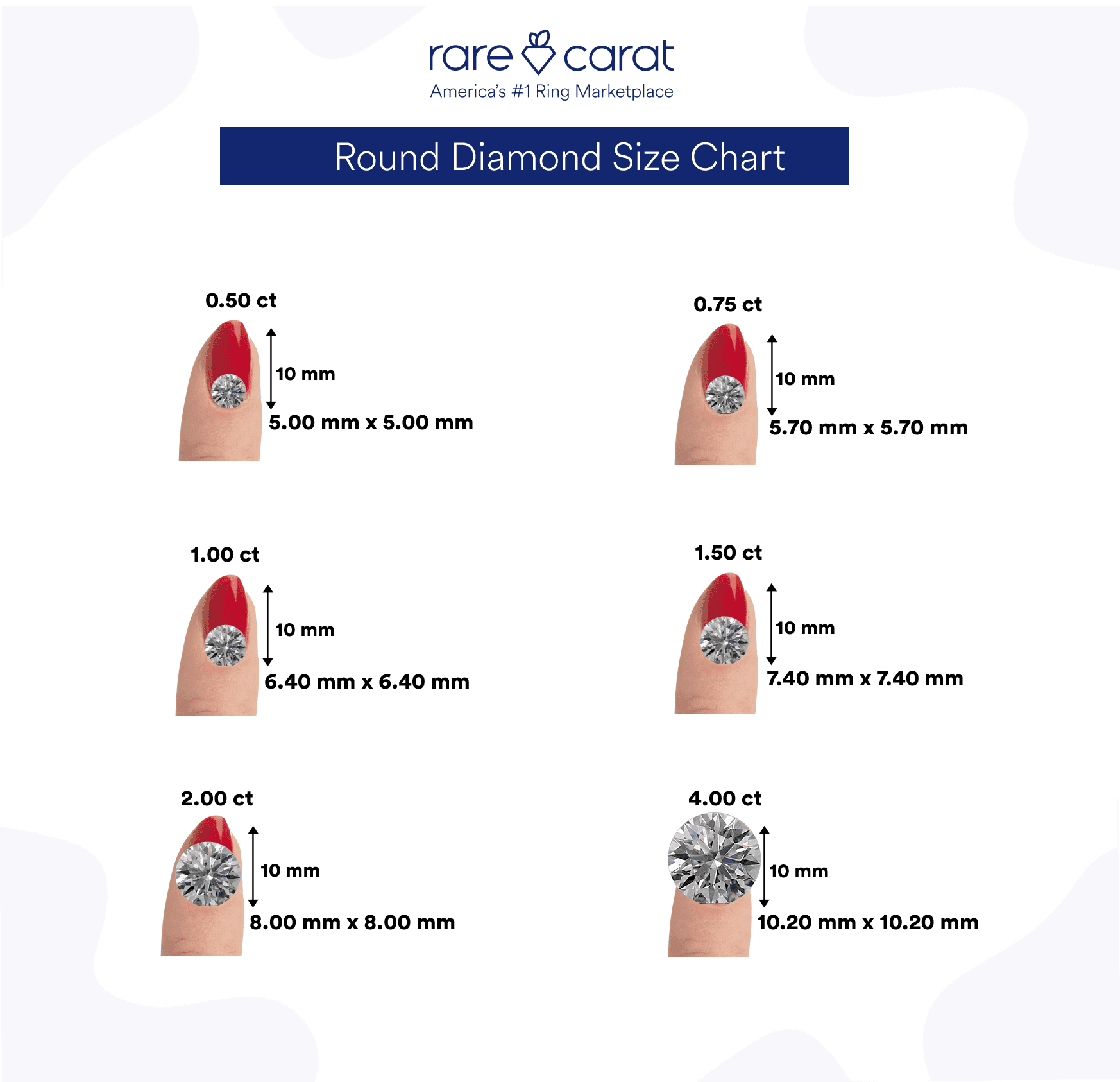Average Diamond Size for Engagement Rings - Does Size Really Matter? | Rare Carat
In our bigger-is-better culture, it’s easy to have anxiety about the size of the diamond you choose for your engagement ring. After all, your engagement ring is full of emotion, a visible symbol of the dreams you have for your future together. How to decide what size diamond suits your purpose?
Cultural beliefs, economics, and family traditions all come together when purchasing an engagement ring. Geographic differences play a part in average diamond size as well, causing the average diamond size to vary from country to county. In the US, it’s common to find larger stones with average sizes of slightly over a carat. Across the pond in Great Britain, however, you’ll find average diamond sizes a bit smaller -closer to half a carat. In Europe and Asia, a diamond engagement ring averages closer to one-third of a carat.
To visualize carat size differences in real designs, you can shop engagement rings on Rare Carat and compare them side by side.

If size matters to you, we have a few expert pointers to help you choose wisely for this important purchase.
Is Bigger Always Better?
While we often focus on carat weight when assessing gemstones, it’s rarely the most significant factor influencing a stone’s visual impact. A cutter’s job is to preserve as much of a natural stone as possible. Sometimes, this yields a stone whose weight resides in places where you can’t see it. A lot of weight can be hidden under the girdle, reducing the visible area of the stone.
What should you consider instead of carat weight? Cut, my friend, that’s what. The cut of a stone refers to its arrangement of light-bouncing facets, its shape and its overall proportions. A well-cut diamond allows light to enter, bounce from one interior facet across to another one, then bounce back out the top where it appears to your eye as a brilliant sparkle. A poorly-cut diamond, however large, looks dull and lifeless in comparison.
The shape of the stone itself also influences how large it appears. The classic round Brilliant, the most popular diamond shape in the US, can look smaller than a well-cut marquise or pear due to their elongated shapes. Or, consider the Asscher cut. Its broad square outline and hall-of-mirrors effect pack a big visual punch. These unusual shapes have additional power to surprise and delight, as they are less-common choices in today’s market.

In the end, you must ask the eternal question: Does size matter? Now that you know what to look for, you can find the stone that will tantalize you for a lifetime. Because of course, what really matters isn’t the size of your diamond, but what it does for you.

